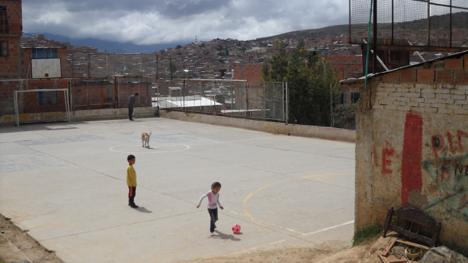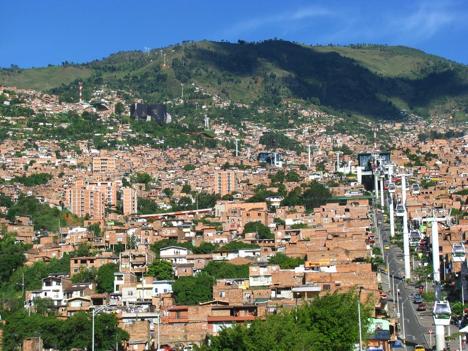
2 minute read
Physical Design with Social Impact
CASE STUDY: Bogotá, Colombia
The use and functions of public spaces in informal settlements can have varying meanings. Informal settlements have very limited space available for public use. However, in the barrios (informal settlements) of Bogotá, Columbia, “public spaces in the barrios play an important role from the beginning of the settlements, and connect closely with the people, influencing social relations but also transforming places” (Hernández-García, 2013). Therefore, the barrios of Bogota are different from most other informal settlements because public spaces are considered from the beginning. Based on our communication with our clientpartners and field methods in Ocupação Anchieta this is also important in informal settlements in Brazil. It is critical for the community to have inclusive spaces for social engagement and connection (Hernández-García, 2013).
175 Children Playing in Barrios.
form” (Frumkin, 2003). The design of healthy spaces depends on the collaboration between designers, planners and health professionals who can impact the creation of community areas that promote a ‘sense of place’ (Frumkin, 2003).
PHYSICAL DESIGN WITH A SOCIAL IMPACT
One of the main goals in informal settlement upgrading should be to diminish the level of vulnerability experienced by residents. By implementing educational and cultural programming in community spaces, residents can own the projects implemented and learn how to improve their quality of life. According to Abbott, there are four elements of vulnerability: physically marginalized environments, lack of opportunity of asset retention and growth, household relations and composition, and perception of poverty (2002). Without a functioning community area that can be used for the multiple community needs, it is difficult to ascertain the sustainability of the implementation of design components. Community-building activities can provide an opportunity to “enhance the awareness of the beneficiaries of the interventions (...) so that the systems, materials and solutions that have been deployed are absorbed by the resident populations of the intervened areas” (Aulicino, n.d.). This way, residents will use community space to continue to
build and share knowledge, as well as use the physical transformation of their shared spaces to enhance their new sense of identity as an environmentally sustainable occupation (Abbott, 2002).
Our recommendations aim to enhance the existing community-building and engagement mechanisms in Ocupação Anchieta. Through the cultural design component of our plan, Taubman Team proposes to provide a space for cultural and educational activities that focuses on sustainable development and environmentally conscious practices related to the Occupation’s site. Our goal is to highlight the importance of the natural and social environment throughout the informal settlement, and for residents to share knowledge about how to maintain infrastructure, waste management and green infrastructure interventions.

176 Cable Car System in Medellin.
CASE STUDY: Medellin, Colombia
In Medellín, Colombia the local Administration created the project “Proyecto Urbano Integral – PUI (Integral Urban Project), a slum upgrading model (Arcila, 2008). The project’s objectives include to ‘empower community based organizations’, ‘improve of public space’, and construct and improve community facilities.’ Specifically, these objectives focus on training community leaders and building off of existing local knowledge and projects, generating a system of informing residents about what is going on in the community, creating public parks, incorporating and upgrading facilities such as libraries, schools, and sport areas (Arcila, 2008). The PUI model seeks to address concerns that are widespread across informal settlements, such as Ocupação Anchieta. The objectives of empowering community based organizations, improving public space, and constructing community facilities can be expanded upon and incorporated towards the Cultural Anchieta project as it develops (Arcila, 2008).






